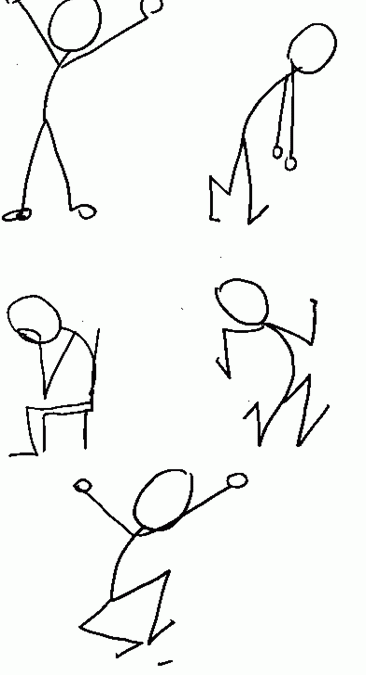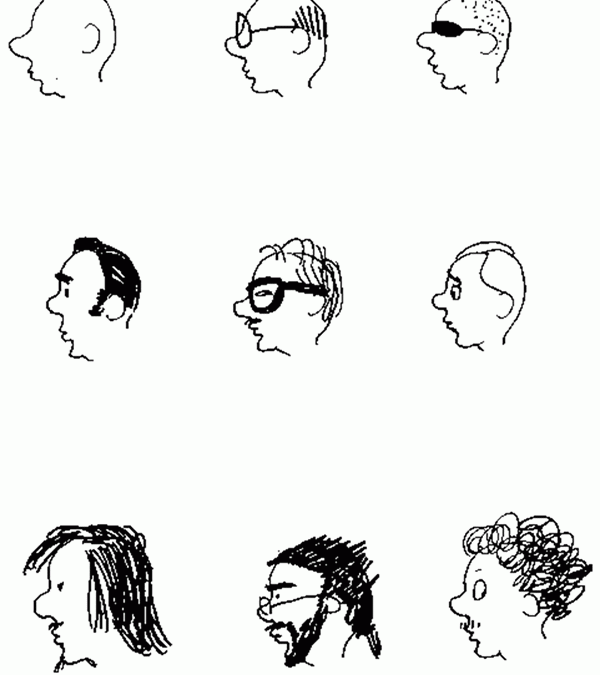
by Alan Moir | Jul 13, 2017 | Lessons |
EQUIPMENT: All you need at this stage is pencil, paper, eraser and felt-nib pen. 1. Take your pencil or felt-nib and dozens of scraps of paper and draw ovals, hundreds of them. IMPORTANT Keep your wrists off the paper. The purpose of this is to help you ‘loosen up’....

by Alan Moir | Jul 13, 2017 | Lessons |
EYES Eyes are the most expressive part of a cartoon face, so these too need lots of practice. But simple expressions are not difficult to create. First draw lots of pairs of circles and oblongs as below, add dots, don’t make the dots too small. Then add eyebrows. Do...

by Alan Moir | Jul 13, 2017 | Lessons |
BODIES We’ll start with ‘stick-figures’. Practice trying to get the general proportions right. Though exaggerate the size of the head. This allows you to get facial expressions that can be easily seen. ‘Body language’ is an important part of the figures. Exaggerate...

by Alan Moir | Jul 13, 2017 | Lessons |
MEN, WOMEN and CLOTHING Body shape and clothes play an important role in portraying in a shorthand way the stereotypes of characters, eg by profession, (like a lawyer, teacher, baker, farmer etc) or ‘type’, ( surfer, conservative, bikie etc). Observation is the best...

by Alan Moir | Jul 13, 2017 | Lessons |
FACES Faces come in an endless variety. Just by changing a hairstyle, glasses, or adding moustache or beard you can come up with an enormous number of versions of the same character. Start with a basic ‘profile’, then vary the hair etc. Do 20 of your own. Do the same...

by Alan Moir | Jul 13, 2017 | Lessons |
ANIMALS Animals feature in cartoons in two ways; often as a ‘prop’ (eg as a background farmyard animal, like a horse being ridden, a dog being talked to) and sometimes as the central character of the cartoon, (eg Mickey Mouse, Garfield, etc). Cartoons of animals do...







